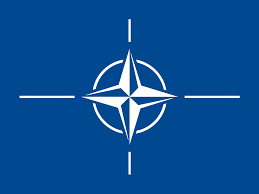
The announcement of Sikorsky’s S70 UHawk, a pilotless variant of the legendary Black Hawk helicopter, marks a pivotal moment in military aviation. This development is not merely an incremental upgrade to a legacy platform but a significant leap towards the operational reality of autonomous combat and support systems. By integrating advanced autonomous flight technology into one of the world’s most ubiquitous and trusted airframes, Lockheed Martin’s Sikorsky is positioning the UHawk as a transformative solution for modernizing existing fleets and addressing the complex challenges of future multi-domain operations. The concept moves beyond remotely piloted drones, introducing a high degree of artificial intelligence and machine learning to enable the aircraft to perform complex missions in contested environments with minimal human supervision, fundamentally altering the risk calculus for commanders.
This initiative represents the culmination of over a decade of dedicated research and development. Its roots can be traced back to Sikorsky’s MATRIX™ Technology, an autonomy system designed to give operators flexible control, from full autonomy to manual flight. A key milestone was the collaboration with the Defense Advanced Research Projects Agency (DARPA) on the Aircrew Labor In-Cockpit Automation System (ALIAS) program. This program successfully demonstrated the ability of an optionally piloted Black Hawk (designated S-70 OPV) to perform complex maneuvers, including autonomous cargo delivery and obstacle avoidance, without human intervention. These demonstrations proved the maturity of the core fly-by-wire technology and the sophisticated software that allows the aircraft to perceive its environment and make decisions. The UHawk, therefore, is not a speculative concept but the product of a deliberate, well-funded, and extensively tested technological roadmap aimed at retrofitting or producing new-build autonomous capabilities for the global Black Hawk fleet.
Strategic and Operational Implications
The strategic impact of an autonomous Black Hawk is profound. Its most immediate application lies in executing the ‘dull, dirty, and dangerous’ missions that expose aircrews to significant risk. These include logistical resupply in contested airspace, reconnaissance in areas with dense anti-aircraft defenses, and medical evacuation (MEDEVAC) from active combat zones. By removing the pilot from the aircraft, the UHawk can operate on missions where the risk of loss would be unacceptable for a crewed platform. This capability is particularly crucial in peer-level conflict scenarios, where advanced air defense systems threaten to deny airspace to conventional aviation assets. Furthermore, an autonomous logistics network of UHawks could revolutionize sustainment, enabling rapid, on-demand delivery of supplies directly to frontline units, reducing reliance on vulnerable ground convoys. This shift enhances operational tempo and resilience, allowing forces to remain agile and distributed across the battlefield.
Key Actors and Market Dynamics
The primary actors in this development are Sikorsky, its parent company Lockheed Martin, and the U.S. Army, the world’s largest operator of the UH-60 Black Hawk. For the U.S. Army, the UHawk presents a compelling proposition. It offers a cost-effective path to modernize its vast ‘enduring fleet’ of Black Hawks, augmenting and complementing the next-generation platforms emerging from the Future Vertical Lift (FVL) program. Rather than a full replacement, the UHawk could serve as a bridge technology, infusing the existing fleet with 21st-century capabilities. Beyond the U.S. military, the international market is substantial. With over 30 nations operating the Black Hawk, an autonomous upgrade kit or new-build UHawk would be highly attractive to allies seeking to enhance their vertical lift capabilities without the cost of entirely new systems. This creates a significant economic opportunity for Lockheed Martin and reinforces the Black Hawk’s position as a dominant global platform for decades to come.
Future Scenarios and Challenges
The path to widespread adoption involves several potential scenarios and challenges. Initially, the UHawk will likely operate in an ‘optionally piloted’ mode, allowing a human crew to be present to oversee missions and build trust in the system. As the technology matures and gains acceptance, a transition to fully autonomous operations for specific mission sets, such as cargo transport, is expected. However, significant hurdles remain. These include the development of robust cybersecurity measures to prevent hacking or electronic warfare interference, the establishment of certification and airworthiness standards for autonomous military aircraft, and the evolution of military doctrine to fully integrate these assets into combined arms operations. The successful integration of the UHawk will also depend on its ability to network with other assets within frameworks like Joint All-Domain Command and Control (JADC2), acting as a responsive node for logistics, surveillance, or communications relay.
In conclusion, the Sikorsky S70 UHawk is far more than an unmanned helicopter; it represents the operationalization of mature autonomous technology on a proven, globally recognized platform. Its potential to reduce risk to personnel, solve complex logistical challenges, and create new tactical possibilities is immense. While technical and doctrinal challenges must be overcome, the UHawk signals a clear trajectory for military aviation, where intelligent, autonomous systems will work alongside human warfighters to define the future of vertical lift and multi-domain warfare.


